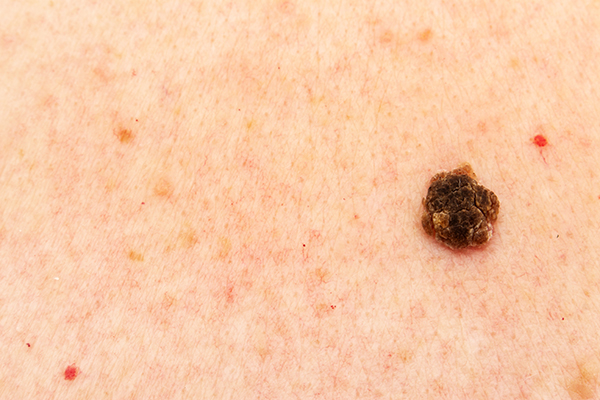Jump To
 As people age, they tend to develop skin growths that can either be harmful or benign, with seborrheic keratosis falling under the latter category. While this skin condition doesn’t present a risk to the patient’s health, it can be inconvenient and can make patients self-conscious. Learn more about seborrheic keratosis treatments in Boston by reaching out to Westford Dermatology & Cosmetic Center.
As people age, they tend to develop skin growths that can either be harmful or benign, with seborrheic keratosis falling under the latter category. While this skin condition doesn’t present a risk to the patient’s health, it can be inconvenient and can make patients self-conscious. Learn more about seborrheic keratosis treatments in Boston by reaching out to Westford Dermatology & Cosmetic Center.
What Is Seborrheic Keratosis?
Seborrheic keratosis—pronounced seb-o-REE-ik ker-uh-TOE-sis—is a condition that occurs when skin cells start clumping together, which results in a growth or several growths. These benign growths can come in different sizes, shapes, colors, and textures. They can be brown or black and can resemble scales with waxy surfaces. Seborrheic keratoses are not contagious.
Seborrheic Keratosis Symptoms
Patients can tell that they have seborrheic keratoses when they notice bumps that are either round or oval in shape. These growths can either be flat or domed, and in some cases, they can be up to an inch in diameter. These bumps may be itchy.
Seborrheic keratoses can occur around the eyes or other spots around the patient’s face. There may be just one or several.
Seborrheic Keratosis Causes
The cause of seborrheic keratosis is not completely understood. Current information notes that people simply develop them as they grow older. There is also a hereditary component to consider, since there may be a family history of these growths.
Am I at Risk for Seborrheic Keratosis?
Patients who have yet to reach their 50s are less likely to develop seborrheic keratosis than those who are over that age range. However, the early stages of the growth can start appearing earlier. Those who have parents or grandparents with seborrheic keratosis are more likely to get them when they are older.
Diagnosing Seborrheic Keratosis
Patients will need to schedule a consultation to have their seborrheic keratosis diagnosed. This is important not only for the patient’s peace of mind, but also to get options for treating the problem. Diagnosis is typically quite simple and involves an examination of the growth by a dermatologist.
Seborrheic Keratosis Treatments
There are several treatment options to get rid of seborrheic keratosis. One is to freeze the growth using liquid nitrogen, which is more effective on smaller, flat growths. Scraping works for these types of seborrheic keratosis, as well. For thicker, bumpier growths, electrocautery can be used, which essentially burns away the growth using electric current.
Seborrheic Keratosis Prevention
As of the moment, there are no ways to prevent the development of seborrheic keratosis. It can only be treated.
Contact Us for Your Consultation
For patients who want to learn more about treatments for seborrheic keratosis in Boston, schedule a consultation with Westford Dermatology & Cosmetic Center. Contact us today to get started.

